Funds See Their First Overall Outflows Since March 2020
Long-term mutual funds and exchange-traded funds shed $89 billion in April 2022, marking the first such overall outflow since March 2020.
This article is adapted from the Morningstar Direct U.S. Asset Flows Commentary for April 2022. Download the full report here.
Amid mounting losses across equity and fixed-income markets, long-term mutual funds and exchange-traded funds bled $89 billion in April 2022. April was their first month of outflows since March 2020. The weakness was rather widespread: Five of the 10 U.S. category groups suffered outflows, as did 68 of the 120 Morningstar Categories.

Investors generally dumped sector-equity funds investing in economically sensitive areas of the market in April. Financials funds’ $7.3 billion in outflows equated to a negative 7.4% organic growth rate, their worst mark since December 2018. Conversely, flows into more-resilient segments of the market, such as consumer defensive and utilities, were strong.
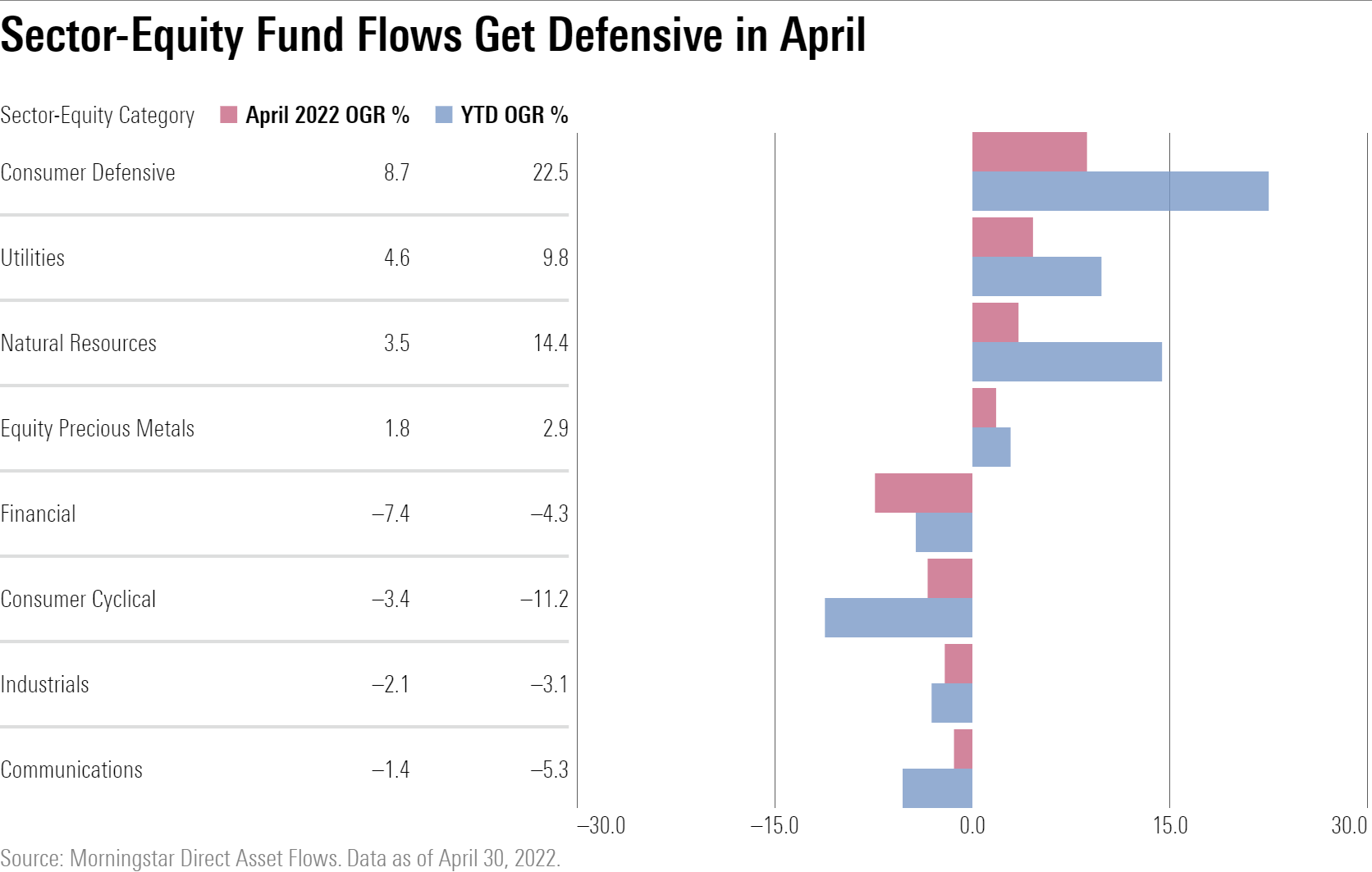
Persistently high inflation and plunging markets again led investors to commodities funds. They’ve gathered inflows in every month so far in 2022 to the tune of $24.3 billion. Their 14.4% year-to-date-organic growth rate is the second-highest among the 10 U.S. category groups.

Taxable-bond investors pared back credit risk in April. The taxable-bond category shed $16.8 billion for the month, marking the first four-month stretch of outflows since 2000. Investors favored safer government-bond funds, which collected more than $8 billion in April for their second consecutive month with an organic growth rate above 2%.
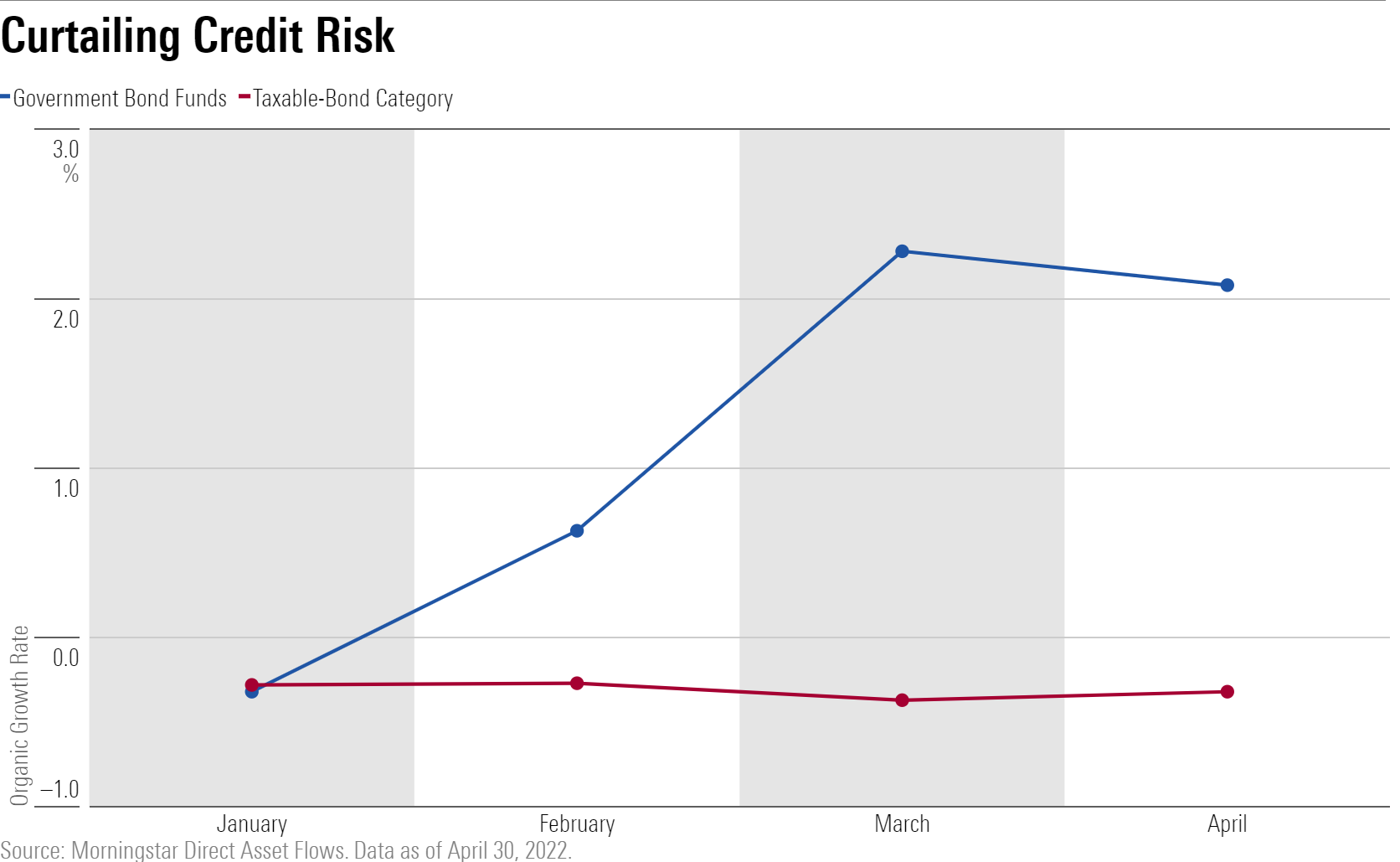
Investors have fixated on longer-term government bonds. Funds targeting those securities have grown at a faster clip than their shorter-dated peers over the past six months. This might reflect investors' belief that long-term interest rates will decline soon.
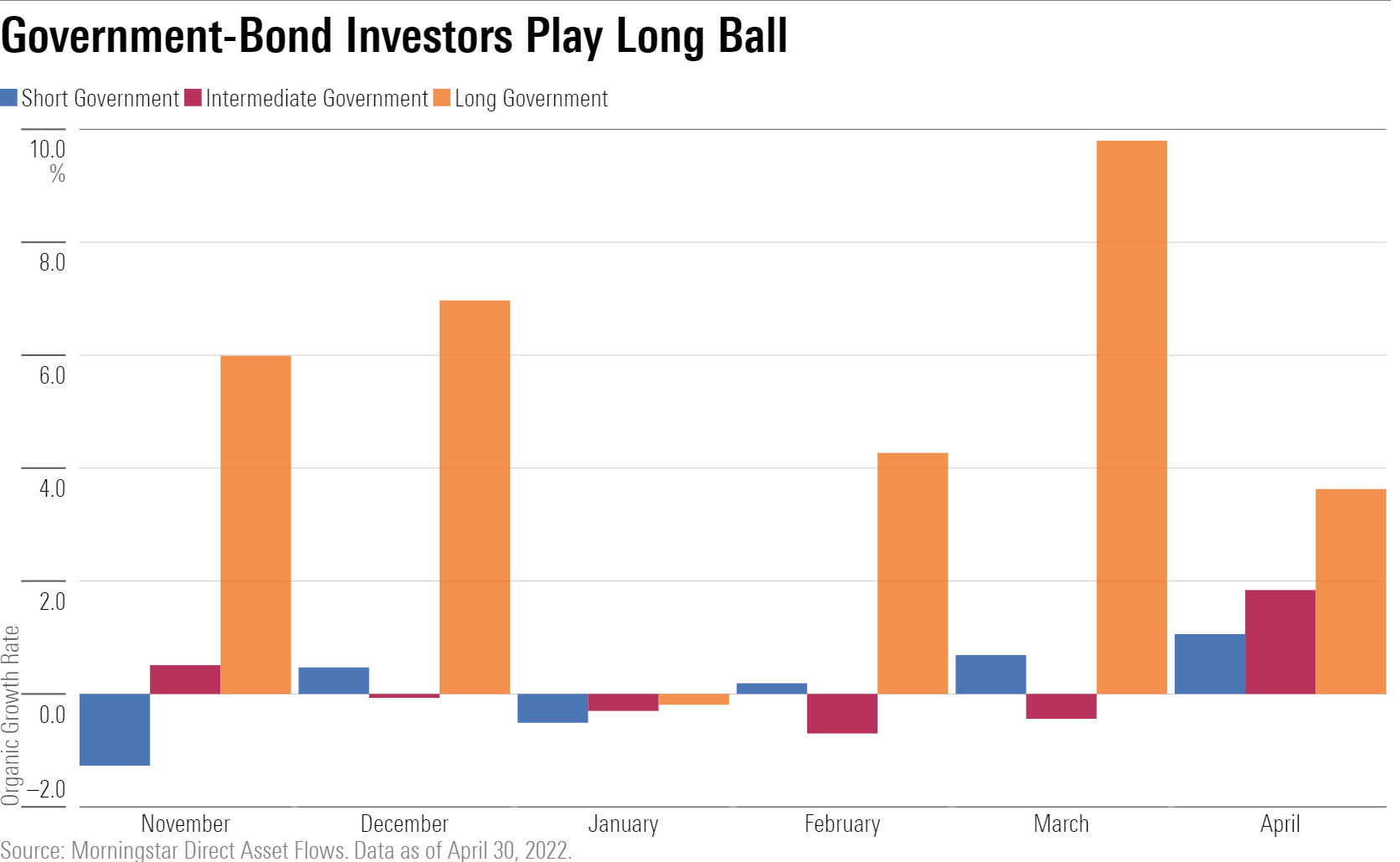
In recent months in which the equity market declined, flows into the trading–leveraged equity category have gone up. The Morningstar US Market Index lost 9.0%, and S&P 500 trackers bled $31.2 billion in April, but these funds collectively raked in $4.9 billion—good for a 7.3% organic growth rate—as some investors looked to “buy the dips.”
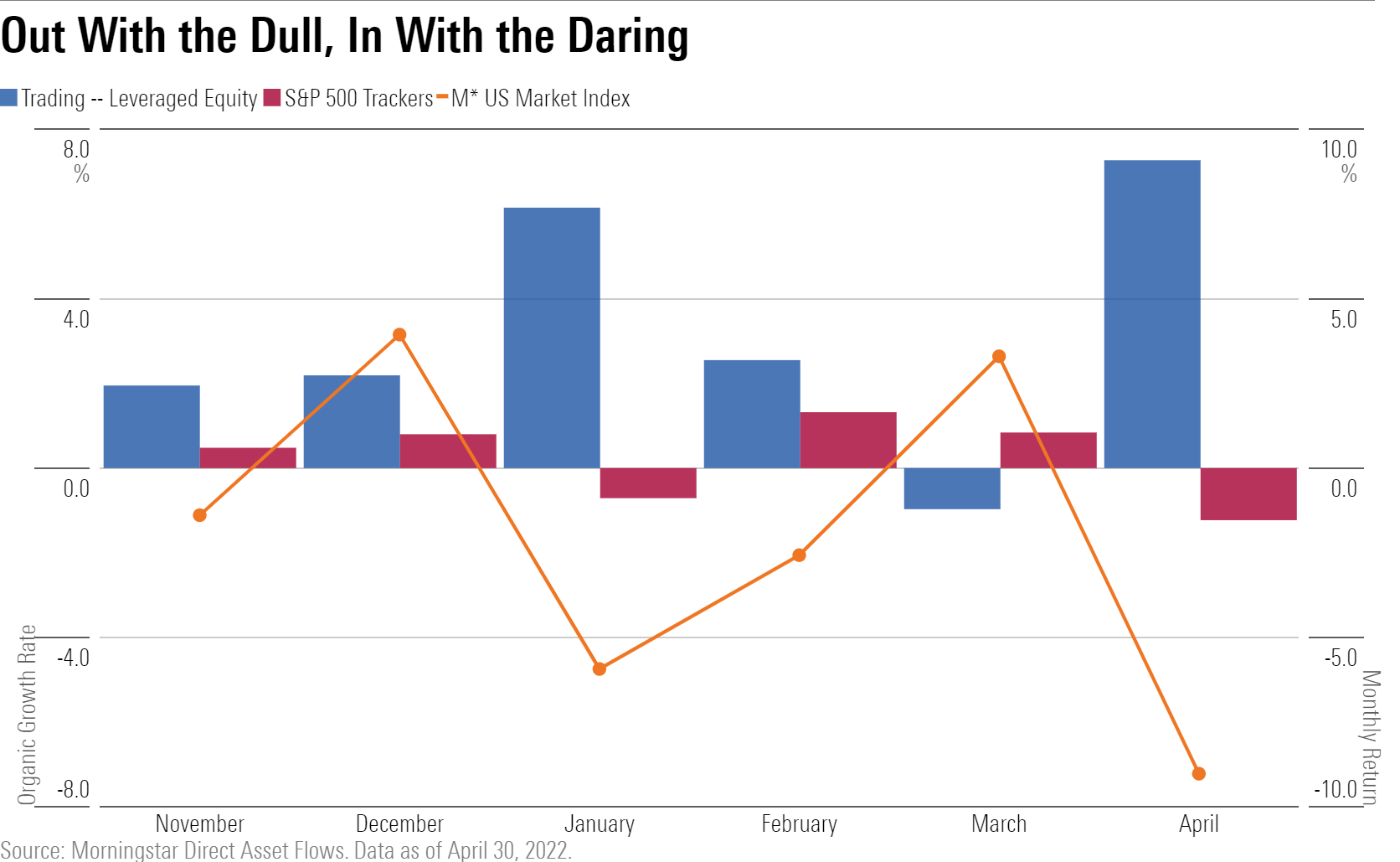
Sustainable funds collected just $913 million in April for a 0.26% monthly organic growth rate, their lowest tallies since July 2019. However, in the context of the broader market, this result was quite strong. Nonsustainable funds posted a negative 0.35% monthly organic growth rate in April and have also grown less rapidly in months of positive flows.
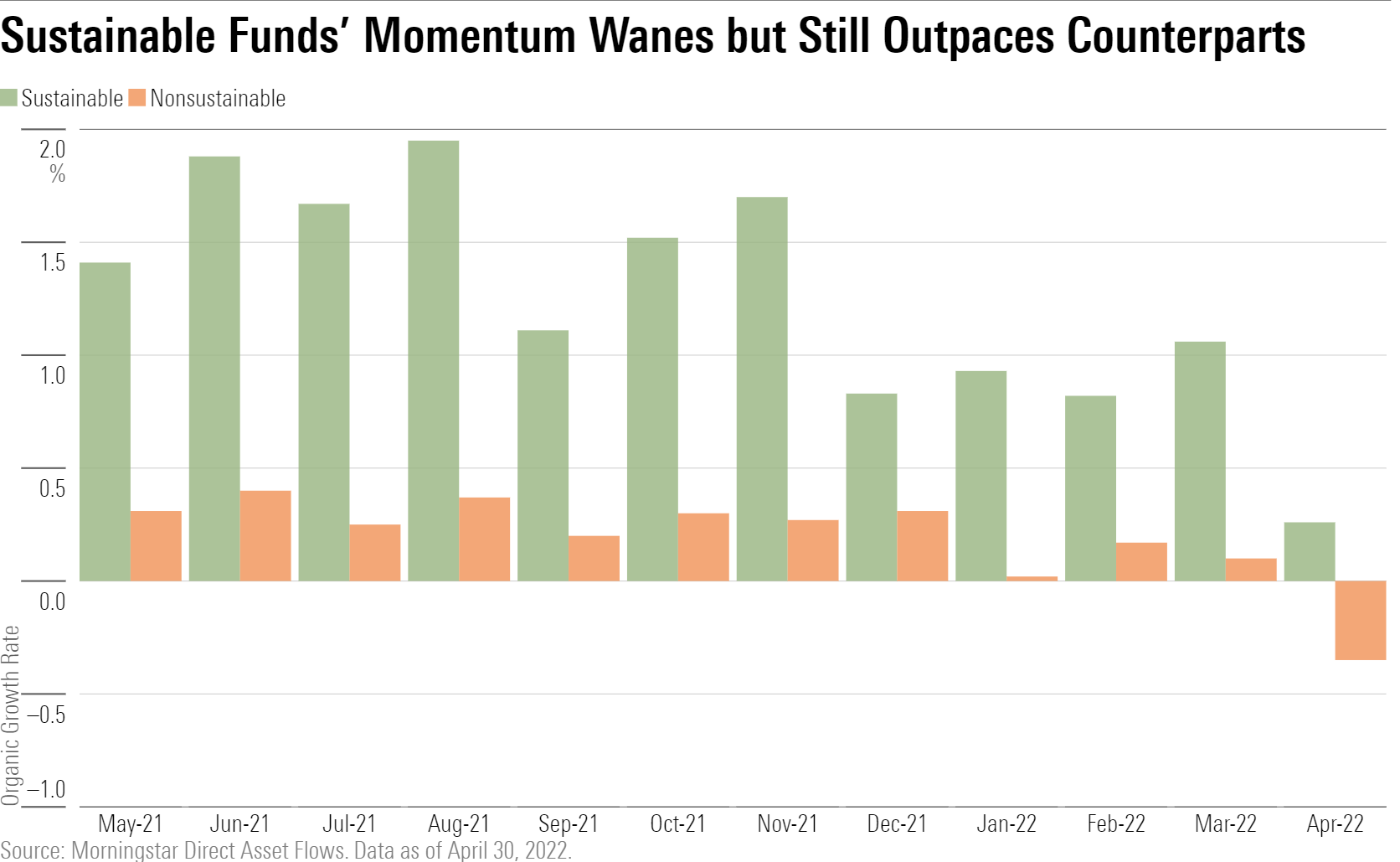
Schwab ETFs’ passive fund lineup gathered the most assets of any fund family, taking in $2.5 billion. Industry behemoths Vanguard, iShares, and SSGA all suffered outflows.
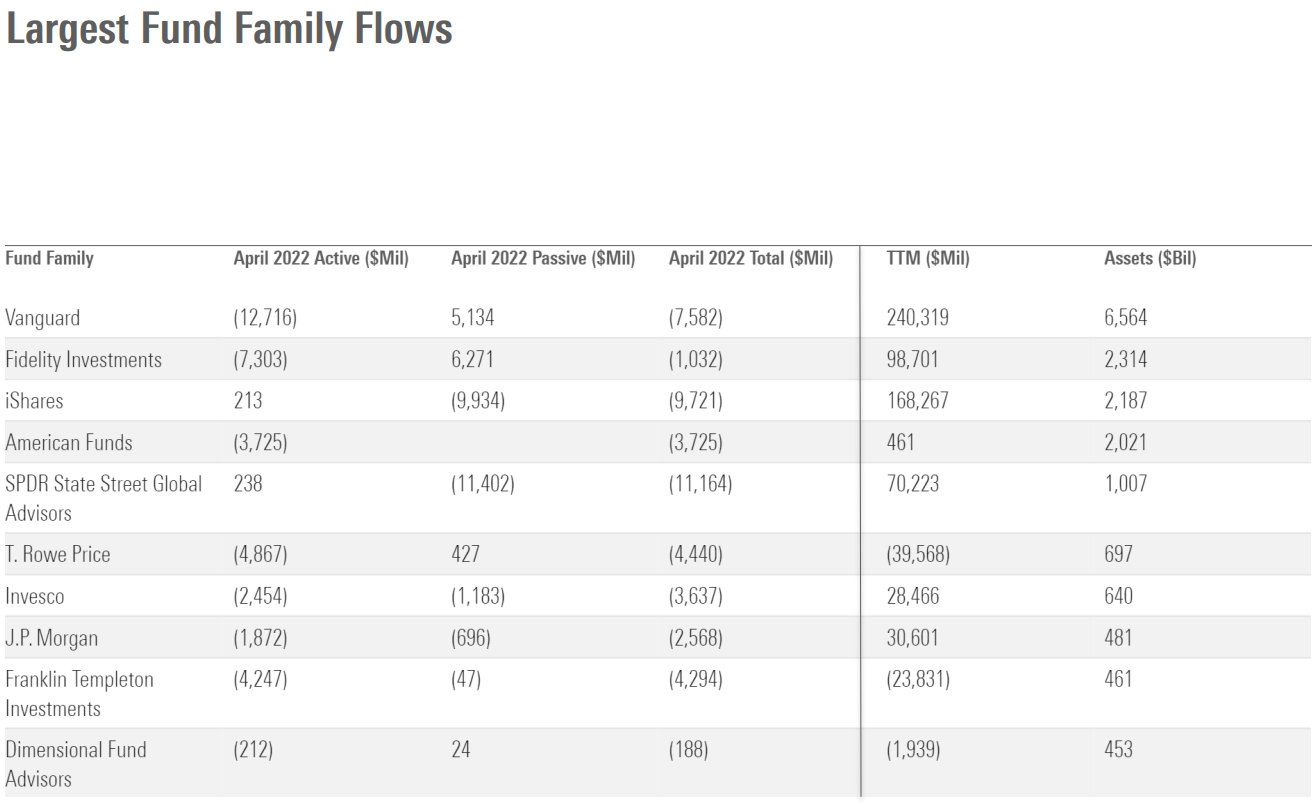
Note: The figures in this report were compiled on May 11, 2022, and reflect only the funds that had reported net assets by that date. Artisan had not reported, and Matthews had not fully reported. The figures in both the commentary and the extended tables are survivorship-bias-free. This report includes both mutual funds and ETFs, but not funds of funds unless specifically stated. It does not include collective investment trusts or separate accounts.

/s3.amazonaws.com/arc-authors/morningstar/96a2625e-83c2-4fdb-9fd7-0efcd07c88bb.jpg)
/s3.amazonaws.com/arc-authors/morningstar/30e2fda6-bf21-4e54-9e50-831a2bcccd80.jpg)
/cloudfront-us-east-1.images.arcpublishing.com/morningstar/HDPMMDGUA5CUHI254MRUHYEFWU.png)
/cloudfront-us-east-1.images.arcpublishing.com/morningstar/OMVK3XQEVFDRHGPHSQPIBDENQE.jpg)
:quality(80)/s3.amazonaws.com/arc-authors/morningstar/96a2625e-83c2-4fdb-9fd7-0efcd07c88bb.jpg)
:quality(80)/s3.amazonaws.com/arc-authors/morningstar/30e2fda6-bf21-4e54-9e50-831a2bcccd80.jpg)